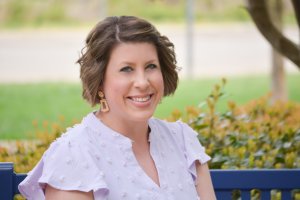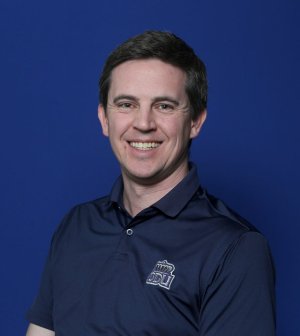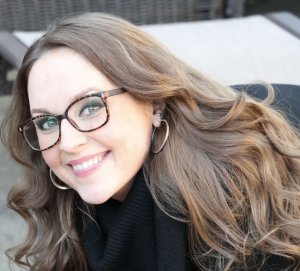It’s a beautiful morning in Mexico City. The streets are full of people celebrating Dia de los Muertos – Day of the Dead. A student archeologist steps into a bustling square.
"There's so much to see,” she says in Spanish to her companion, a historian and fellow student. “Where should I start?"
“Look for older families; they might have tales spanning generations,” he says.
With that the archeologist and her team embark on a choose-your-own-adventure style journey to learn more about the customs and history of this cherished Mexican holiday. And it’s all without ever leaving the classroom.
A new project under development at Old Dominion University’s Virginia Modeling, Analysis and Simulation Center (VMASC) for the York County School Division will enable students in seventh through 12th grades to travel virtually to countries like Mexico and France with the aid of VR headsets and specially designed software that enables peer-to-peer interactions on tablets or iPads. In that virtual world, students will encounter authentic scenarios that will help them practice their language skills while working collaboratively with classmates.
"What we're building is language learning/second-language acquisition, incorporating integrative technologies grounded in learning sciences," said Jessica Johnson, director for STEM and Educational Partnerships at VMASC. It will be tailored to York County’s needs, she added. “It’s unique to their students, their community and their educators.”
The effort is the first of its kind, according to school division representatives, and funded through a $2 million Department of Defense Activity Educational (DoDEA) Partnership World Language Advancement and Readiness Program grant that York County received in 2022. VMASC is using a portion of that funding to develop immersive content for the school division’s VR technology. Beta testing for Spanish and French level 1 is scheduled to begin in April 2024.
"This project has enabled us to assemble the dream team of interdisciplinary experts,” Johnson said. Members include John Shull and Ann Kumm. Shull is VMASC’s assistant director of technology for collaborative spaces and a lead project scientist. His specialty is mixed reality development, which he's been doing for almost a decade.
Kumm, a lecturer at ODU’s English Language Center, has been working with multilingual undergraduate and graduate students, curriculum development and community outreach to K-12 family engagement specialists for more than 10 years. Her research has focused specifically on teacher development.
"So, really working to make sure that we're building communities of support for teacher training and even for those who want to volunteer and work with teachers or with multilingual populations," Kumm said.
Students from ODU’s Game Studies & Design program have also had a hand in the virtual content development, Johnson said. "We're building teams that are utilizing ODU degree programs and partnerships forged between VMASC and main campus in this project.”
The VMASC team is building eight modules for York County's Spanish and French world language courses – four modules per language – that will carry students from the basics of level one to the more challenging aspects of level four.
"They came to us with this blank slate of, ‘We want to use virtual reality,’” Johnson said of the school division. “Naturally it's eye candy: Kids use it, teachers have used the 360 environments. They wanted us to help find ways to embed VR, whether it was gamifying the curriculum (or) embedding it into the curriculum.
"That's the value of this relationship and collaboration with York County — they have some amazing and passionate world language educators who really know their content areas.”
Virtual reality is a part of the learning process, but it’s only one aspect of it. "We’re not going to put 32 people in a headset,” Shull said. The plan includes small collaborative groups where each student takes a specific role. The student with the headset, who will be fully immersed in the virtual environment, will host the session and the other students – playing the parts of a curator, historian or journalist, for example – will join on tablets as part of a peer-to-peer network.
Kumm said the benefit of role-playing is it enables students to step outside of themselves and take risks with the language, reducing the anxiety and stress that can inhibit acquisition. As a group, they have to work together to complete a task using the language they’re learning.
Whether it’s the vibrant streets of Mexico City or the mysterious pyramids of Teotihuacan, students could encounter bustling markets or serene plazas with opportunities to learn about traditional celebrations and events. "To meet the module needs, we could in theory put you anywhere," Shull said. "We could come up with any sort of scenario that we need to, that would hit the standards."
The virtual world will be highly stylized, Shull said – the colors a little brighter than reality, for example. For a more authentic feel, the team hopes to incorporate background audio captured by partners who live in the region or by visiting study-abroad travelers.
"Of course, if we could have the smells, that'd be great, too," Kumm said.
The goal is to provide an immersive learning experience that is inviting, engaging and motivating, they said, and York County educators have been an integral part of the process.
"Naturally we need to know what's going to work, not work, fail – we need to iterate in the project to make this successful,” Johnson said. “But they need to also be a part of the development of the content that's going into the systems we are developing.”
"It was just a really great opportunity to find a way to make sure that we're using this technology in a way that's really going to help and benefit the classroom," Kumm said.
According to Lori Donatelli, York County School Division’s language specialist, a team of six teachers have been working closely on the project, meeting with ODU-VAMSC and providing input and feedback. "They're very excited,” she said. “This is another way to bring their curriculum to life.”
The school division, which serves more than 13,000 students, has the highest military-connected population on the East Coast, according to Donatelli. It was one of 45 military-connected local education agencies from across the country to benefit from $15 million that Congress provided in 2022 to promote foreign language study programs targeting elementary and secondary students.
“Exposing elementary and secondary students to world languages is critical to developing and sustaining the pipeline of individuals with skills needed to address national security and economic competitiveness needs,” the DoDEA said in a press release announcing World Language Advancement and Readiness Program grant recipients.
Donatelli said part of York County’s goal is to increase enrollment in the school division's world language classes, but also the number of military-connected students graduating with the state Board of Education’s Seal of Biliteracy, which certifies attainment of a high level of proficiency in one or more languages in addition to English.
“We live in a world where it’s important for our students to have more than one language, and we know that the best way to learn a language is to be fully immersed in it,” said Karen Cagle, director of curriculum and instruction. “We are not able to send them all over to another country, but we can bring that experience to them in our classrooms.”
“When the opportunity came to partner with ODU-VMASC and have that virtual reality experience, why not use that technology?” she added.






